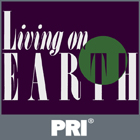Window pane terms due January 5th!
1. Imprinting- type of learning that occurs immediately after birth and stays forever. A goose that believes the first thing it sees after hatching is its mother.
2. Courtship behavior- the things animals do to get a chance to mate- a bird singing a song or flashing its feathers, frogs croaking loudly (loudest wins!).
3. Territorial behavior- things animals do to mark and protect their territory. Lions roaring when another one approaches. Dogs “marking” their territory. A bird squawking when you get near their nest.
4.Pheromones- chemical signals that animal (and plants) send out into their environment to convey a message. Ants do this to tell others where food is located, women release a pheromone when nursing (aids in bonding).
5. Primitive- refers to something that is really old and/ or basic.
6.electron microscope- strongest microscope- uses an electron beam to visualize the smallest things, like viruses and ribosomes.
7. Greenhouse effect- When the atmosphere holds in infrared radiation bouncing off of the Earth, therefore heating the planet. Normally this is good for us because it keeps us at stable temperatures. It’s getting to be bad because of the “Greenhouse gases” being released from burning fossil fuels. The Atmosphere is too thick which holds in more heat.
**CO2 (carbon dioxide) and CH4 (Methane gas) are the worst greenhouse gases
8. Ozone depletion- The ozone is a protective part of our atmosphere that blocks some dangerous UV radiation. Chlorofluorocarbons (CFC’s) found in spray cans are responsible for putting a hole in the Ozone layer.
9. cell differentiation- when a cell, a stem cell, has the ability to become any type of cell. All cells have the same DNA, but due to differentiation, only certain genes in a DNA strand are used depending on the cell type. A muscle cell uses different genes and has more mitochondria than a cell in your pancreas that is responsible for making insulin. Different purpose = different amounts of various organelles and different sections of DNA that are activated.
10.Passive immunity- When you gain the ability to be immune to a disease without having to do any work- a baby gets immunity from breastfeeding to many pathogens (anything that makes you sick). You get “artificial” passive immunity when you take anti-venom for a snake bite.
11. Active immunity- when you gain the ability to be immune to something because you were actually exposed to the illness and created antibodies inside of yourself to fight the infection. If you got chickenpox as a small child, you won’t get them again because you have antibodies that remember and fight it as soon as it sees it! You get “artificial” active immunity when you are given a vaccine. The vaccine has the dead form of the virus in it so your body will make specific antibodies for it but you won’t have to get sick with the disease first.
12. antibiotic resistance- when we use antibiotics so much that the bacteria we now have in our environment is the evolved form that is immune to our antibiotics. We have caused directional selection, eliminating the average of the species and leaving behind the extreme version. The same concept applies to pesticide and herbicide resistance.
13.nutrient cycles- cycles in nature that allow for needed compounds to move in and out of different systems ( going from the atmosphere where they are a gas or a particle of some sort to a solid in the earth and back again!). These cycles are what allow our planet and its organisms to survive. ( water cycle, carbon cycle, phosphorous cycle, Nitrogen cycle and sulfur cycle). They are all connected!!
14. Phylogenetic tree-is a branching diagram or "tree" showing the inferred evolutionary relationships among various species.
15.Restriction enzymes-these enzymes cut DNA at specific locations (specific stretch of A’s, T’s, C’s or G’s) that can be found in every persons DNA, but in different areas! This creates a pattern that we can then use (gel electrophoresis) to create a DNA fingerprint.
16.Enzymes- speed up chemical reactions by lowering the activation energy needed to complete a chemical reaction. ENZYMES do NOT get used up! They get used over and over and over again!
17. Biochemical evidence- this term is usually used to prove an evolutionary relationship and it is referring to DNA or protein similarities between species. When you see “biochemical” or “biomolecule” you should jump to your organic compounds and figure it out from there.
18. Genetically Modified Organisms (GMO’s)- organisms that have been changed genetically to help them survive adverse conditions. Rice that can survive underwater for 2 weeks or through a drought! Farmers use these for lots of reasons- we still don’t know if it’s the best way to do things in the long run.
19. stewardship- when you do things to protect the environment- re-cycle, reduce consumption, conserve natural resources.
20.sustainability- When you participate in practices that don’t disrupt the ecosystem. Manufacture products using renewable or reusable materials or farm without deforesting.
21. Estivation- an adaptation that animals have developed to help them survive extremely hot temperatures. ( a desert animal will burrow underground during the hottest part of the day- like a siesta!)
22. Hibernation- an adaptation that animals have developed to help them survive extremely cold weather when food and water are scarce. ( bears do this, polar bears even give birth while hibernating!!)





